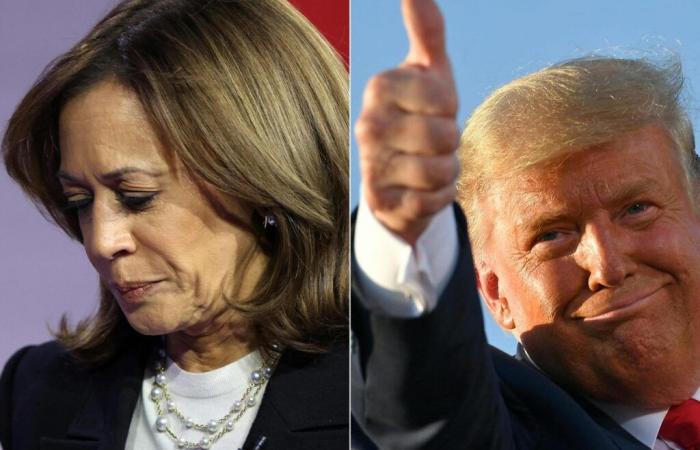PTo understand the presidential election in the United States, we must ask ourselves not one but two distinct questions.
On the one hand, how can we explain the vote for Donald Trump?
On the other hand, why did Kamala Harris fail to mobilize her electorate?
Let's compare the (provisional) results of 2024 to those of 2020: Trump brings together approximately the same number of voters. If he wins by four to five million votes, it is because Harris has fallen far behind Joe Biden, probably by more than eight million (out of 81). We can therefore estimate that a tenth of the 2020 Democratic electorate abstained in 2024.
For example, in the state of New York, won by the Democrats, if, in percentage terms, Trump reduces the gap by half, his electorate remains stable; but Harris lost nearly a million votes. Certainly, participation remains high, but it has declined. If abstention is not taken into account, we can have the illusion that part of the electorate has switched from one camp to another. But the election is not a zero-sum game. In reality, the Trump vote is stable; it is the Democratic vote that is declining.
Read also | Article reserved for our subscribers American presidential election 2024: Kamala Harris, the failure of a political life
Read later
Abstention, by definition, does not appear in exit polls. However, most interpretations are based on these percentages of voters. Take the example of gender gap, the gap between the vote of women and that of men, which has been particularly important since 1996.
Kamala Harris as Hillary Clinton
The day after the Supreme Court's decision against the federal right to abortion, in 2022, the mobilization of women weighed in at the polls. In 2024, wouldn't Trump's ostentatious sexism reinforce this trend? This was not the case: certainly, Harris won among women, but less than Joe Biden before her, and also less than Trump among men. To explain these paradoxical data, we can make the dual hypothesis of strong mobilization among men (including among Latinos), and weak among women (at least white, since the majority of them gave their votes to the candidate republican). The masculinist vote thus ended up winning over the feminist vote.
Read also | Article reserved for our subscribers Naomi Klein, essayist: “Kamala Harris has been swept away by the wave of discontent sweeping across democracies”
Read later
Why did women demobilize? Harris' campaign is reminiscent of Hillary Clinton's in 2016. Neither questioned the neoliberal policies embraced by the Democratic Party. The end of the campaign made things worse: to win at the center, Harris seemed to give in to the interests of big business. However, in the United States as elsewhere, young female voters are increasingly liberalthat is to say marked on the left (30 points more than young voters).
You have 62.03% of this article left to read. The rest is reserved for subscribers.






